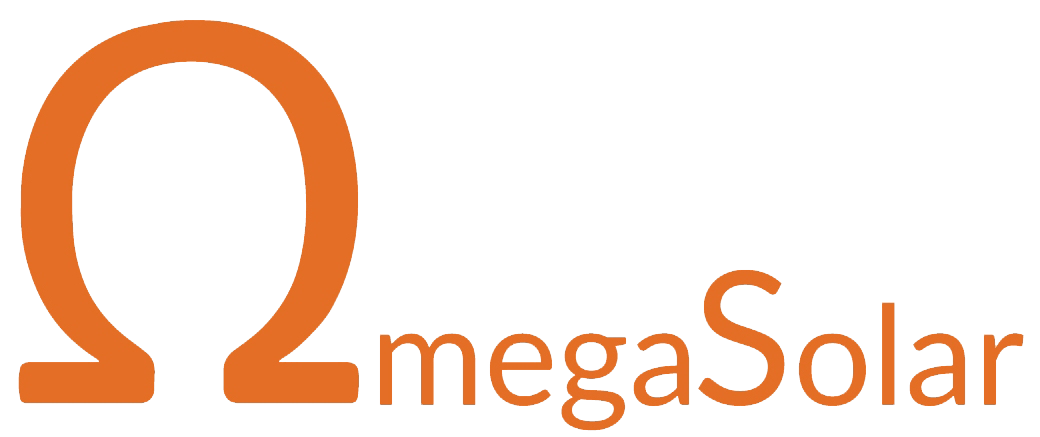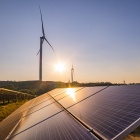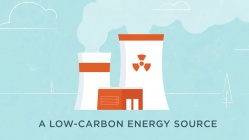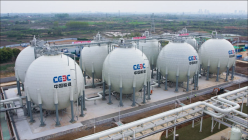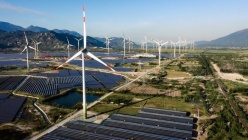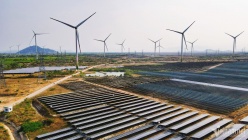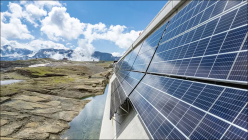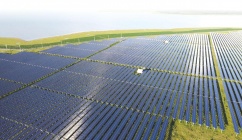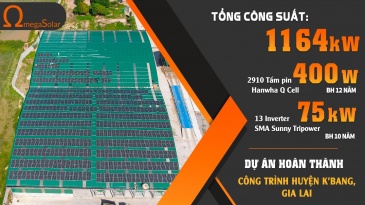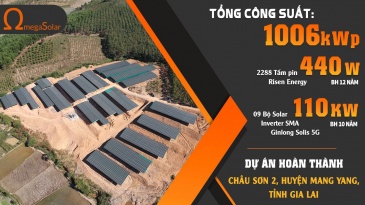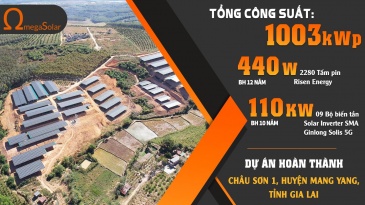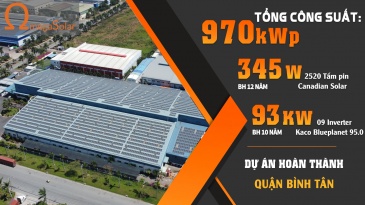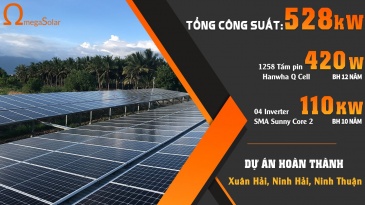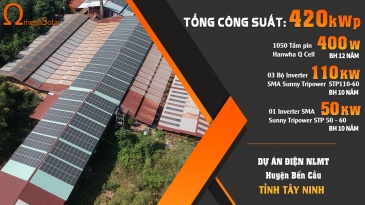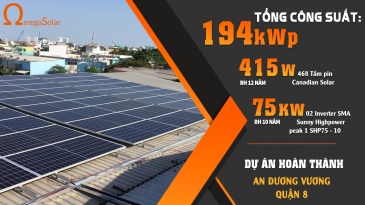The dream of storing solar power
The biggest disadvantage of wind and solar power is that it cannot provide regular and permanent electricity, so it is likely that there is a situation where there is no electricity when needed, and when there is no need for excess electricity. The dream of a renewable electricity maker is how to store electricity when it's windless, sunny, into some kind of battery so that when it's windy and dark, the battery can be used to generate electricity into the grid. This dream is gradually becoming a reality as more and more energy storage technologies are introduced.

Solar system. Picture by: H.P
Sand battery
The latest is the work that uses sand to store heat as a kind of "sand cell" of Finland. Press information said that Finland has successfully built the world's first "sand battery", which it says can store renewable energy for at least a few months. The operating mechanism of sand batteries is quite simple, they use ordinary sand and then use solar or wind power to heat it to 500 degrees Celsius when there is excess electricity; Such stored heat will be used during a power outage (see schematic diagram).

Called a "sand battery", this is actually a giant silo containing 100 tons of construction sand erected by a group of young Finnish engineers in the city of Kankaanpää near the Vatajankoski power plant. When there is excess electricity, the sand is heated by hot air flows around the inside of the silo. According to the engineers, sand is an ideal material to store heat because it is less lost to the surrounding environment; Under good conditions, the silo will maintain the sand temperature at 500 degrees Celsius for several months. And when there is a shortage of electricity, for example, in the winter when there is no sunlight, the sand cell will generate heat, heating the water in the hot water supply system for the whole city for use in offices, homes and even swimming pools.
The problem with sand cells is that they are only effective when used to generate heat; when trying to convert heat into electricity to be sent back to the grid, the efficiency drops sharply. Therefore, the sand cell project is only useful for industries that need heat such as textiles, food production, pharmaceuticals, etc.
Water battery
Meanwhile, Switzerland has built a kind of "water battery" - a hydroelectric power station with two reservoirs at two different heights. When there is an excess of renewable electricity, people use this electricity to pump water from the low lake to the high lake, and when there is a shortage of electricity, they will let the water flow from the high lake to the low lake, running the power generation system of the hydroelectric plant. The factory just started operating at the beginning of this July.
According to the Independent, it took Switzerland 2 billion euros and 14 years to complete this project in an area about 600 meters at the foot of the Alps. It's not the world's first "water battery" nor is it the largest project of its kind, but its capacity is respectable: six turbines with a combined output of 900 megawatts, according to the operating company, it's enough to power 900,000 homes. With the capacity to store the equivalent of 20 million kWh of electricity, this project will help stabilize the power grid of Switzerland and parts of Europe.
The high investment amount is because the project is located deep underground, with many challenges in construction technology. The company that built the plant, Nant de Drance, had to drill an 18-kilometer tunnel under the Alps to connect the two reservoirs.
A little known fact is that currently 94% of the world's large-scale energy storage projects use water pumping. Most of these projects were built in the 1960s-1990s to take advantage of the extremely cheap electricity generated by nuclear power plants late at night.
Brick Battery
Energy Vault, a Swiss company with operations in California, chose a different technology for renewable energy storage. They build high platforms so that when there is excess electricity, they use that electricity to lift concrete blocks weighing 35 tons each to 35-storey towers. When there was a lack of electricity, they let the bricks fall, creating kinetic energy to run the generator. The idea is quite simple, the problem is how effective it will be. Energy Vault has successfully raised capital, currently has $100 million to deploy these “brick battery” rigs in the US, Middle East, Europe and Australia.
As reported by Wired, at a tower in Switzerland, the proponents of the "brick battery" project raised two concrete blocks to a height of 66 meters, electricity powered by a motor to lift heavy objects came from exceeding renewable electricity. These concrete blocks can hang there for a few hours, when it changes from sunny to night, the regenerative power system is in short supply, the concrete blocks are lowered gradually, the lifting motor rotates in reverse, generating electricity to load on the grid. According to Wired, each block of concrete can generate 1 megawatt of electricity.
Energy Vault says a standard "brick battery" rig will have 7,000 "bricks", enough for several thousand households to use for eight hours without wind or sunlight. The remaining problem, according to the CEO of Energy Vault, is to achieve low-cost electricity storage.
And many other types of batteries
In addition to the familiar lithium-ion battery, many ideas for making other types of batteries to store energy are being tested everywhere. Quidnet, a Houston-based startup, is experimenting with a reverse "water battery," meaning that instead of pumping water from a low lake to a high lake, they pump water a few hundred meters underground, then let the earth's pressure push it back and uses this force to run the generator.
Another company, Hydrostor in Toronto, Canada pumps gas into tanks, stores the heat generated during the compression process and then returns it to expand, generating power to run a generator. The company has received $300 million in investment capital to launch several projects in California and Australia. Particularly Highview Power, a British company using more extreme measures, cooled the gas to nearly -150 degrees, at which point the gas turned into a liquid; When the liquid is heated again, it quickly turns into the gas that drives turbine engines.
The race to make batteries that can store energy from wind and solar power when needed is a quiet but very exciting race. So far, lithium-ion batteries are dominant, but other methods, which store a much larger amount of energy, are being developed. In terms of technology, it is not difficult – the remaining problem is the cost and scale of deployment. This is a trend that renewable electricity developers in our country should watch and know to seize the opportunity that will soon open.
- Cơ chế mua bán điện trực tiếp DPPA (04/07/2024 16:22:49)
- Cơ chế mua bán điện trực tiếp của Chính phủ (04/07/2024 16:21:30)
- Russia transferred its most advanced nuclear reactor to China (25/06/2024 12:04:04)
- Repurposing Coal Power Plant Sites with Low Carbon Nuclear (25/06/2024 10:54:03)
- ‘World’s largest’ compressed air energy storage project connects to the grid in China (20/06/2024 10:09:52)
- Develop battery storage systems to contribute to ensuring sustainable energy security (13/06/2024 16:31:19)
- Details of Vietnam's power source structure according to Power Plan VIII (22/05/2023 16:51:09)
- How to help EVN does not "lack of electricity" (15/05/2023 10:38:13)
- Install 5,000 solar panels on Europe's tallest dam (11/05/2023 16:51:16)
- Hiệu năng chuyển đổi Hydro (27/02/2023 15:40:11)
CONTACT US

